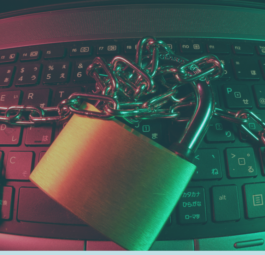
High Stakes: Cybercrime and the $600bn dollar question
The war against cybercriminals has reached a critical point and businesses should ready themselves for an attack every 14 seconds, says Neill Lawson-Smith FBCS, MD of CIS Ltd
In its 2014 list, Eighty Moments That Shaped the World , the British Council ranked Sir Tim Berners-Lee’s invention of the World Wide Web at number one, stating, “The fastest growing communications medium of all time, the internet has changed the shape of modern life forever.”
But back in 1989 when the idea was first floated, it would have been difficult to imagine the profound effect that it would have upon us all. Indeed, the notion that it would also have negatively affected some 2bn people and become a $600bn drain on the global economy might have even seemed far-fetched.
Yet, the ubiquitous nature of the net means the rewards on offer to cybercriminals are high, with attacks coming thick and fast. As many as 40,000 new methods now occur every day as latest government figures point to businesses having to face up to a cyber attack every 14 seconds.
Such dynamism from hackers demands a careful and considered response, but with some big brand casualties falling foul of cybercriminals in the past year, many firms feel they are staring into the abyss. Take British Airways (BA) for example. The recent hack that exposed more than 380,000 customer details was caused by just 22 lines of malicious code. This, just one of some 945 data beaches that saw more than 4.5bn data records compromised in the first half of 2018 according to Gemalto.
Now, these are big numbers and being brought ever more sharply into focus by news headlines and new regulations such as the GDPR. But if the big brands are busy issuing apologies to customers and having their tails clipped by the regulators, what can small to medium sized businesses realistically achieve when it comes to keeping cybercriminals at bay?
Well, firstly it’s not a problem you should tackle alone. Advances in technology have brought new threat combinations and multiple methods of attack. These mean that firewall and antivirus solutions in isolation are no longer sufficient to defend a business and its IT systems against hackers.
In today’s threat landscape, staff must be vigilant at all times. Cybercriminals still bait them by masking weapons within what look like trusted emails and websites when phishing for their details.
However, new dangers lurk around every corner. More than two thirds of attacks are now fileless, or zero-footprint, where hackers can gain entry without having to place malware on your system to get in. These stand a much higher chance of slipping the net as they use legitimate applications and your own operating system against you, meaning antivirus solutions are more likely to miss them.
This is a minefield where the best cyber security practitioners come into their own, cutting through the noise to offer advice and solutions that understand your needs and seamlessly align with brand goals.
Last year, we witnessed the disruption caused to the NHS and other firms by the WannaCry ransomware which went on to affect some 300,000 computers in more than 150 countries when self-replicating worms took advantage of unpatched IT. Yet, such instances, where IT systems are locked by cybercriminals until a ransom payment is made, can be guarded against by engaging experienced IT practitioners to advise on the appropriate measures and tools. Doing so could help prevent you from becoming part of an £8.9bn statistic next year.
The good news is that by heeding such advice and combining new tools and technologies that work together to provide coordinated multi-layered protection across the entire business, firms can proactively protect their networks, detect emerging threats, and react to any potential breaches.
This is known as Unified Threat Management (UTM) and brings major benefits for customers as this technology harnesses new preventative solutions using the application of Artificial Intelligence (AI) and Machine Learning (ML).
These technologies act as enablers, adding new levels of intelligence to IT security systems that mean they can learn hacking techniques to outwit cybercriminals before problems occur. This happens in real time 24 hours a day, ensuring ‘evergreen’ IT systems that are always up to date and offer the best in protection.
Modern day enterprises need this, with IT systems being a mix of cloud, mobile devices and remote working. Such flexibilities complicate security issues within the modern workplace and mean that UTM is a necessity when tackling increasingly sophisticated adversaries.
Moreover, the application of UTM alongside expert advice when reviewing your technology assets, will enable you to optimise your IT estate by mitigating risk and cutting business costs. This, in turn, will increase the productivity of staff and save you time as you go about daily tasks safe in the knowledge that systems and data are protected.
For an informal chat around this and any other IT issues you may have, please get in touch.
More in IT Services

Get Support Announced as B4’s Official IT Partner
We are delighted to announce that Oxfordshire’s leading IT Services provider, Get Support, have become B4’s Official IT Partner.

Guiding the Development of AI Systems
Guiding the Development of AI Systems Artificial Intelligence (AI) continues to transform how we live, work, interact and access services. There is potential for it to bring multiple benefits to the global population. However, this is balanced by significant concerns that AI systems could turn into a sci-fi nightmare. So, how can AI development be […]

Your Business Without IT
You are invited to take a moment to visualise what would happen if your IT infrastructure went down, your customer and supplier data was stolen and your intellectual property was compromised. With denied access to your systems and information, operations will come to an immediate standstill. Financial demands are made and there’s a risk that […]
From this author

What does an IT support company do?
IT can be a daunting industry for many, and although the majority of people use IT every day of their lives for both work and leisure, once something goes wrong many can be at a loss for what to do. This is where an IT support company, like CiS could help – by offering the help and guidance you need, not only when something goes wrong but also as a preventative measure.

The Home Office of the Future
On this edition of The Business Brunch, join Paul Ballinger from STL Communications, Kellie Peters from Databasix and Neill Lawson-Smith from CIS, as they discuss the pros and cons of working from home and what the expectations are from customers.

The Home Office of the Future
Many are now having to embrace working from home as part of their daily diet of work, so how can you make it better, how can you ensure you’re doing it right, how can you ensure you’ve got all the bases covered?

